|
|
 |
 |
|
 |
|
Per conoscere il Castello Monaldeschi della Cervara |
|
|
|
"Nemo propheta in Patria" o meglio l'originale "Nemo propheta acceptus est in Patria sua". Più vado avanti nelle ricerche, più rimango stupito che negli Stati Uniti d'America si facciano conferenze e giornate di studio sulla torre di nord ovest del Castrum romano poi Castello Monaldeschi della Cervara in Monte Rubiaglio, dove risiedo, e invece qui non se ne parla affatto. Silenzio tombale. Ieri al Castello sono venuti due australiani di Melbourne a visitarlo. Spesso ci stupiamo che molti stranieri vengano nella nostra bella Italia. Il motivo è semplice. Loro conoscono la nostra Storia, l'apprezzano e la studiano. noi non sempre! Il finanziamento della ricerca sulla torre romana di Monte Rubiaglio e sui sottostantii ruderi di Coriglia è stato fatto dal Saint Anselm College e dall'Institute for Mediterannian Archaeology sotto l'egida della Soprintendenza per i Beni Archeologici dell'Umbria e del Parco Archeologico e Ambientale dell'Orvietano. |
|
|
| |
|
|
Il Castello di Monte Rubiaglio dalla sua fondazione romana nel 209 a.C. ha accolto molti visitatori. Citandone solo alcuni ed andando in tempi più vicini, il Pontefice Niccolò IV (1288-1292) venerdì 9 giugno 1290 vi soggiorna per due notti entrando in Orvieto Domenica 11. D'allora molti illustri personaggi hanno visitato e soggiornato al Castello. Il Capitano di Ventura Bartholomeo Liviano d'Alviano trascorre la sua infanzia e adolescenza (dal 1455 al 1469) presso la zia Nalla, ovvero Emilia Monaldeschi della Cervara moglie di Corrado, fratello di Francesco d’Alviano padre di Bartholomeo poiché sua madre Isabella degli Atti è morta di parto cesareo e suo padre è imprigionato per l'avversione al Papa Paolo II;
il Re di Francia Carlo VIII di Valois, 1484; il Duca Valentino Cesare Borgia, 1503; Corrado V Monaldeschi della Cervara e la Regina di Francia Caterina de' Medici, 1532; il Cardinale Gerolamo Simoncelli, 1598; il Re di Francia e di Navarra Enrico IV di Borbone, 1601; la Regina di Svezia Christina Alessandra Wasa, 1680; il Re di Gran Bretagna James III Stuart, 1725; il Pittore paesaggista Joseph Mallord William Turner, 1828; il Conte Ludovico Negroni, 1857; l'Oberstleutnant Alfred Lersen, 1944; l'Oberburgermeister di Meissen Olaf Raschke, 2007. |
|
|
| |
|
|
To know the Monaldeschi della Cervara Castle |
|
|
|
|
|
"Nemo propheta in Patria" or rather the original "Nemo propheta acceptus est in Patria sua". The more I go on in my research, the more I am amazed that in the United States of America there are conferences and study days on the north-west tower of the Roman Castrum then Castello Monaldeschi della Cervara in Monte Rubiaglio, where I live, and instead we don't talk about it here at all. Dead silence. Two Australians from Melbourne came to the Castle yesterday to visit it. We are often surprised that many foreigners come to our beautiful Italy. The reason is simple. They know our history, they appreciate it and study it, we don't always! The funding of the research on the Roman tower of Monte Rubiaglio and on the underlying ruins of Coriglia was made by the Saint Anselm College and the Institute for Mediterannian Archeology under the aegis of the Superintendence for Archaeological Heritage of Umbria and the Archaeological and Environmental Park of Umbria. 'Orvietano. |
|
|
| |
|
|
The Castle of Monte Rubiaglio from its Roman foundation in 209 BC welcomed many visitors. Citing only a few and going to more recent times, Pope Niccolò IV (1288-1292) on Friday 9 June 1290 stays there for two nights entering Orvieto on Sunday 11. Since then many illustrious people have visited and stayed at the Castle. The Captain of Ventura Bartholomeo Liviano d'Alviano spent his childhood and adolescence (from 1455 to 1469) with his aunt Nalla, or Emilia Monaldeschi della Cervara wife of Corrado, brother of Francesco d'Alviano father of Bartholomeo since his mother Isabella degli Atti she died of Caesarean section and her father is imprisoned for his aversion to Pope Paul II; the King of France Charles VIII of Valois, 1484; Duke Valentino Cesare Borgia, 1503; Corrado V Monaldeschi della Cervara and the Queen of France Catherine de 'Medici, 1532; Cardinal Gerolamo Simoncelli, 1598; Henry IV of Bourbon, King of France and Navarre, 1601; the Queen of Sweden Christina Alessandra Wasa, 1680; the King of Great Britain James III Stuart, 1725; the landscape painter Joseph Mallord William Turner, 1828; Count Ludovico Negroni, 1857; Oberstleutnant Alfred Lersen, 1944; Meissen's Oberburgermeister Olaf Raschke, 2007. |
|
|
| |
|
|
|
Castello Monaldeschi della Cervara in Monte Rubiaglio |
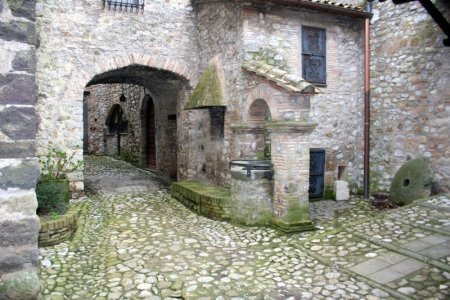 |
| Corte del Castello Monaldeschi della Cervara in Monte Rubiaglio |
|
Torre medievale su basamento romano del 209 a.C. |
| |
 |
| |
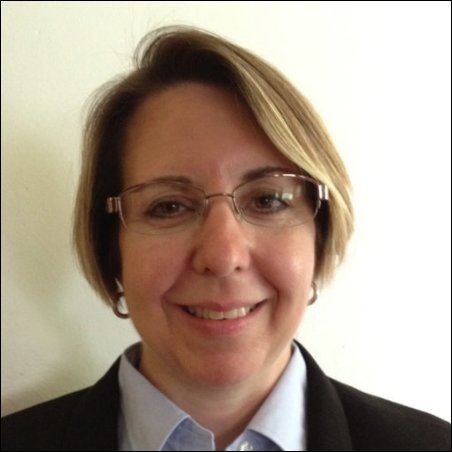 |
| |
Mary Kate Donais Professor of Chemistry at Saint Anselm College in Manchester, N.H., and former President of the Society for Applied Spectroscopy. Ph.D. University of Massachusetts. Analytical Chemistry. Certified Senior Spectroscopist (Society for Applied Spectroscopy). Royal Society of Chemistry Fellow.
Nel corso dell'ultimo meeting che annualmente l'Archeological Institute
of America organizza negli Stati Uniti, sono stati presentati alcuni dei risultati che il team che scava nel sito di Coriglia, sotto a Monte Rubiaglio, ha raggiunto. L'alto profilo scientifico è stato apprezzato dal pubblico presente, costituito in massima parte da specialisti in materia ed il prof. David George, codirettore dello scavo, unitamente alla docente di Chimica dott.ssa Mary Kate
Donais, ha ricevuto commenti estremamente favorevoli sulla relazione presentata. Il titolo completo dell'intervento era: Use of Portable XRF and Portable Raman for Phasing of Walls and Floors of Roman Structures at the Excavations at Coriglia, Monte Rubiaglio, Italy (David B. George, Saint Anselm College, Claudio Bizzarri, Parco Archeologico e Ambientale dell' Orvietano, and Mary Kate Donais, Saint Anslem College). |
| |
|
Portable XRF and Portable Raman |
|
| |
Stralcio dell'analisi spettrografica sulla malta romana della torre di nord ovest del Castello di Monte Rubiaglio, eseguita nel 2012 dai tecnici del Saint Anselm College di Manchester, New Hampshire, Sati Uniti d'America. |
| |
|
| |
|
Saint Anselm College Manchester (NH) USA |
|
Ubicazione del Castello e di Coriglia |
In June of 2006 the OU Center for Classical Archaeology and Civilizations began a new long-term archaeological excavation project of a Roman villa in Italy. The excavation is the “OU Nova Via Traiana Roman Villa Project at Castel Viscardo.” The 2006 OU archaeological team was composed of some forty students and staff. The project was directed by Professor Farland Stanley Jr (The University of Oklahoma) and Professor Claudio Bizzarri (Istituto Internazionale di Studi Classici di Orvieto). The OU Archaeological Field School was directed by Professor Stanley and Associate Director Professor David George (St. Anselm College, Manchester, New Hampshire). The Field Director was Doctor Silvia Simonetti. Trench supervisors were Jennifer Stabler, Shawn Gralla, Teddy Whitehead and Joseph Drake. The archaeological project involves the excavation of an extensive villa complex only fifteen minutes to the Northwest of the beautiful town of Orvieto in the Roman province of Umbria. This villa site is within the comune of Castel Viscardo and is situated immediately beneath the slopes of the neighboring hill-top village of Monterubiaglio. The villa is several acres in size and has a majestic view of the Paglia River Valley and the Alfina highlands. Only a few miles away from the villa site the Paglia River empties into the Tiber.
In the Etruscan and Roman eras the region around Orvieto and Castel Viscardo was a rich agricultural area, as it is today. Numerous Etruscan tombs and Roman sites are in the area. Both the Etruscans and the Romans took advantage of the presence of the many local springs, both fresh water and thermal. One of the fresh water springs is located immediately on our site and its cool refreshing waters were enjoyed throughout the day by our archaeological team.
In the general vicinity of the villa there passed two important Roman roads, the Cassia Via and the Via Nova Traiana (New Trajan Road), the latter giving its name to our project. In June the Center reopened excavations of a villa site which had been initially discovered in 1996. Both the 1996 and 2006 excavations have illustrated that the villa location had a long history that extended through the latter Etruscan period, the Roman Republic, into the Roman Imperial era. The long-term habitation is partly illustrated by the villa’s several building phases, its strategic location, and the environmental benefits that it enjoyed. Our excavations continued to reveal architecture and artifacts that confirmed the large size, wealth, and sophistication of the villa.
The excavations produced numerous artifacts that support the interpretation of the villa as important and significant. Our student archaeologists exposed new walls and found many artifacts. The artifacts included lead water pipes, a ceramic lamp, a bronze fibula, a column base, many small mosaic tesserae of unique colors, coins, numerous fragments of fresco wall painting with “band” designs, a large amount of pottery sherds and roof tiles. The discovery of a large dolium or earthenware vessel was of special interest because it is of a type frequently associated with a burial or religious rite. Such a large villa suggests the need for a necropolis and the dolium may be a clue. In all, the quality and quantity of the artifacts that were found hold the promise for the discovery of many more important cultural features of the site as we excavate over the coming years.
|
| |
|
Saint Anselm College, buildings |
|
Saint Anselm College dining room & coffee bar |
|
Saint Anselm College graduation day |
 |
| |
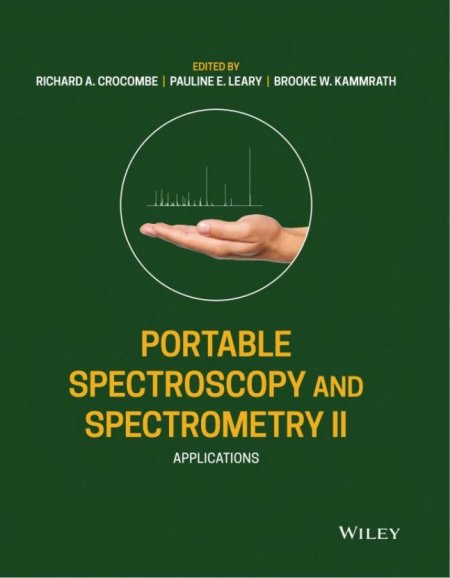 |
| |
Libro delle analisi sulla Torre di Monte Rubiaglio. |
| |
 |
| |
|
| |
Florida, Orlando, The Pittsburgh Conference, Chemical Characterization of a Tower in Monte Rubiaglio, Umbria (Italy) Utilizing Portable X-Ray Fluorescence Spectrometry, Anthony Desmond, co-authors Bradley Duncan and David George, March 13th, 2012.
|
| |
 |
| |
|
| |
New Hampshire, Manchester, Saint Anselm College, Academics, Majors and Departments, Chemistry Faculty, Mary Kate Donais."Chemical Characterization of a Tower in Monte Rubiaglio, Umbria (Italy) Utilizing Portable X-Ray Fluorescence Spectrometry," April 17th, 2012. |
| |
 |
| |
|
| |
Missouri, Kansas City, SciX The Great Scientific Exchange Conference presented by the Federation of Analytical Chemistry and Spectroscopy Societies. co-authors Anthony Desmond, Mericke Youngs, Bradley Duncan, and Mary Kate Donais, Chemical and Architectural Examination of a Tower in Monte Rubiaglio, Umbria (Italy). September 30th-October 5th, 2012. |
| |
 |
| |
|
| |
Massachusetts, Boston, Anthony Desmond - Adjunct Faculty - MCPHS University ex Massachusetts College of Pharmacy and Health Sciences, Program Chemical and Architectural Examination of a Tower in Monte Rubiaglio, Umbria (Italy). Chemical Characterization of a Tower in Monterubiaglio, Umbria (Italy) Utilizing Portable X-Ray Fluorescence Spectrometry. 2012. |
| |
 |
| |
|
| |
New Mexico, Santa Fe, SciX The Great Scientific Exchange Conference di Palm Springs, California, and FACSS International Office, Examination of a Tower in Monte Rubiaglio, Umbria (Italy), 2012. |
| |
 |
| |
|
| |
Washington, Seattle, Preliminary Report of Seven Years of Excavation at Monte Rubiaglio, Italy, David George, Archaeological Institute of America Annual Meeting. 7 January 7th, 2013. |
| |
 |
| |
|
|
New Hampshire, Durham, EPSCoR State Conference and Proposal Workshop Conference, Analysis Laboratory, which studies the chemical and biological processes that ..... Characterization of a Tower in Monte Rubiaglio, Umbria (Italy), November 8th 2018. |
|
 |
| |
|
| |
Una corposa corrispondenza epistolare datata dal 26 aprile 1753 all'11 luglio 1759, dei Negroni di Monte Rubiaglio, che nel 1725 ospitano Re James Francis Edward Stuart al loro Castello di Monte Rubiaglio, sono conservate nelle Carte degli Stuart nel Royal Archives, Windsor Castle. |
| |
|
| |
Marco Maffei, Sindaco di Castel Viscardo dal 1952 al 1956, a pagina 125 del suo libro "Castel Viscardo e gli Spada", Castel Viscardo, Tipografia Ceccarelli Grotte di Castro, 1990, scrive: "L’archivio comunale di Castel Viscardo (dove giovedì 1 gennaio 1880 confluisce quello dell'ex Comune di Monte Rubiaglio divenuto frazione) doveva possedere sicuramente documenti interessantissimi prima che la bufera della guerra con i suoi bombardamenti e le avverse vicissitudini non l’avessero ridotto a poche cose di limitata utilizzazione. Il bombardamento, causando un forzato trasloco del Comune, reso inagibile, in altri locali, unitamente alla durezza dei tempi che non consentivano di dedicare cure particolari a “pezzi di carta” quando erano in ballo esigenze primarie, ha favorito la dispersione di tale patrimonio. Dopo il bombardamento e le devastazioni, si arriva alla vera e propria distruzione dell’archivio con la vendita, come cartaccia, di moltissimo materiale, sicuramente di quello più antico, di quello che oggi ci avrebbe potuto dare una mano in quest’affannosa ricerca di un passato del quale ci mancano riferimenti e fatti". Quindi le risposte del Re e del suo entourage a Negroni sono andate disperse, come quelle di tanti importanti personaggi di varie epoche. |
| |
 |
| |
|
| |
Sua Santità Benedetto XVI nelle date 31 marzo 2009, 17 dicembre 2009 e 25 gennaio 2011 scrive positivi commenti sulla Storia di Monte Rubiaglio come fa Sua Santità Francesco in data 24 giugno 2017. Libri recenti sulla Storia di Monte Rubiaglio sono conservati presso la Pontificia Università Lateranense, Città del Vaticano.
|
| |
 |
| |
 |
Sua Santità Benedetto XVI |
|
|
|
Sua Santità Francesco |
|
| |
Chi non conosce Monte Rubiaglio |
| |
Quanto sopra è parte di ciò che gli Outsides conoscono di Monte Rubiaglio. Quella che seguono sono parte delle "conoscenze" degli Insides. |
| |
|
| |
Ara romana di Monte Rubiaglio, scolpita entro una base di bianco marmo con suoi membri, ha in un lato la patera e nell'altro l'orceolo, strumenti di sacrificio, con la seguente iscrizione: “D(is) M(anibus) / ULPIAE TERPSIDI / SECURUS AUG(usti) DISP(ensator) / CONIUGI / BENEMERENTI / ET HILARUS FIL(ius) / MATRI / PIENTISSIMAE”, “Il fidato amministratore di Augusto (consacra) Ulpia Terpside moglie benemerita agli Dei della tomba ed il figlio Ilaro alla madre amatissima”. Corpus Inscriptionum Latinarum XI 2706. Oggi al Museo Emilio Greco di Orvieto. |
|
 |
| |
|
|
|
|
| |
|
|
|
|
| |
|
|
|
|
| |
|
|
Costruzione di un Rempio romano. |
|
| |
|
|
|
|
| |
|
|
Frammento in basalto con la scritta "PVBLICA" |
|
| |
|
|
|
|
| |
|
|
Frammento in basalto con la scritta "VIR" e "P ... O" |
|
| |
|
|
|
|
| |
|
|
Frammento in basalto di occhio di capitello dorico. |
|
| |
|
|
|
|
| |
|
|
Frammento di architrave o epistilio. |
|
| |
|
|
|
|
| |
|
|
Ingresso ai sotterranei: Vulci e Monte Rubiaglio. |
|
| |
|
|
|
|
| |
|
|
Rudere di Mola con inciso l'anno "1119" nel Castello di Monte Rubiaglio. |
|
| |
|
|
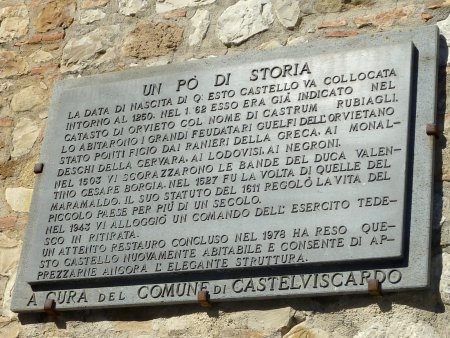 |
|
| |
|
|
Lapide con errori marchiani apposta sulla torre di sud ovest. |
|
| |
|
|
 |
|
| |
|
|
Reperti rinvenuti negli scavi sottostanti la torre del Castello |
|
| |
|
|
|
|
| |
|
|
|
|
| |
|
|
Spalle del ponte etrusco in legno |
|
| |
|
|
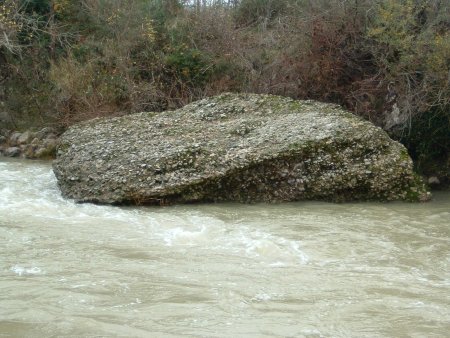 |
|
| |
|
|
Calcestruzzo del Pons de subtus romano in sostituzione di quello etrusco |
|
| |
|
|
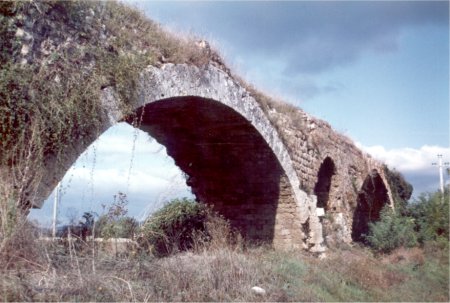 |
|
| |
|
|
Ponte romano con gli esterni riutilizzati del Pons de subtus |
|
| |
|
|
|
|
| |
|
|
Pian di Meana. Giove o Esculapio etrusco |
|
| |
|
|
|
|
| |
|
|
Coriglia. Vasellame etrusco in bucchero |
|
| |
|
|
|
|
| |
|
|
Coriglia. Lampada romana |
|
| |
|
|
|
|
| |
|
|
Coriglia. Reperto ornato |
|
| |
|
|
|
|
| |
|
|
Coriglia. Pinzette per uso cosmetico e chirurgico |
|
| |
|
|
|
|
| |
|
|
Coriglia. Tubo diffusore di calore |
|
| |
|
|
|
|
| |
|
|
Coriglia. Attuale area dio scavo |
|
| |
|
|
|
|
| |
|
|
Coriglia. Scavi archeologici |
|
| |
|
|
|
|
| |
|
|
Coriglia. Copertura di una piscina |
|
| |
|
|
|
|
| |
|
|
Coriglia. Pozzo ? |
|
|
 |
|
| |
| | |
|
 |
|